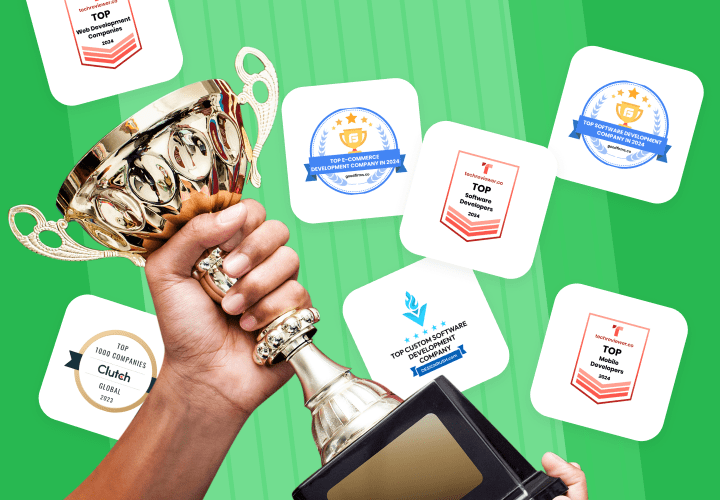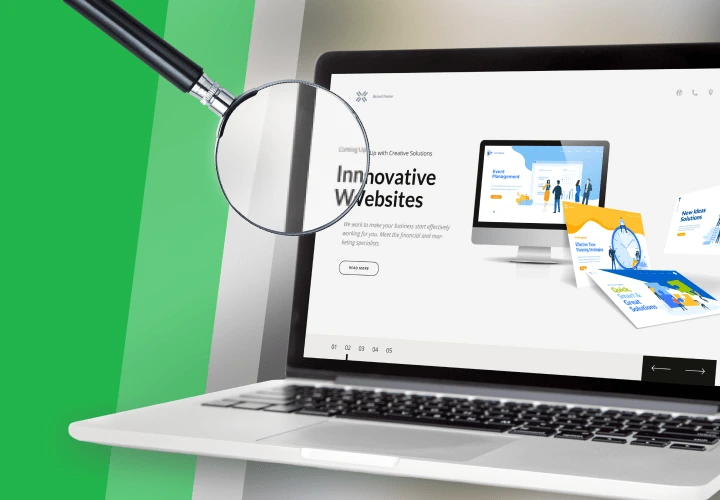Table of contents
The demand for wellness applications is constantly expanding. Increased smartphone usage, growing interest in health and wellness, accessibility, and personalization 一 all these factors contributed to wellness apps being the biggest segment of the digital health market.
Indeed, revenue in the digital fitness and well-being apps segment is growing and is projected to reach $ 47.70 billion by 2027, with an annual growth rate of 13.32%. These are impressive figures that once again demonstrate that wellness apps are worth investing in. However, what are wellness apps? How can you develop a well-being solution that would attract a lot of users? Based on our profound expertise in building solutions for the healthcare industry, we are ready to share our insights.
Key Wellness App Categories and Their Popular Features
Wellness apps are mobile applications designed to help users improve their physical and mental health and well-being. The ultimate goal of wellness apps is to help users lead healthier, more balanced lives by providing them with the tools and resources they need to achieve their health and wellness goals. The most popular wellness apps are fitness, nutrition, meditation, mindfulness, mental health, sleep tracking, etc.
Fitness apps
Fitness apps are mobile applications designed to help users improve their physical fitness and achieve their fitness goals.
More and more people recognize the importance of regular exercise and a healthy lifestyle. That’s why the market observes an increased interest in fitness apps. According to statistics, fitness apps were downloaded more than 400 million times in 2021. Other surveys show that tracking physical activity is the main reason why US citizens download health and medical apps.
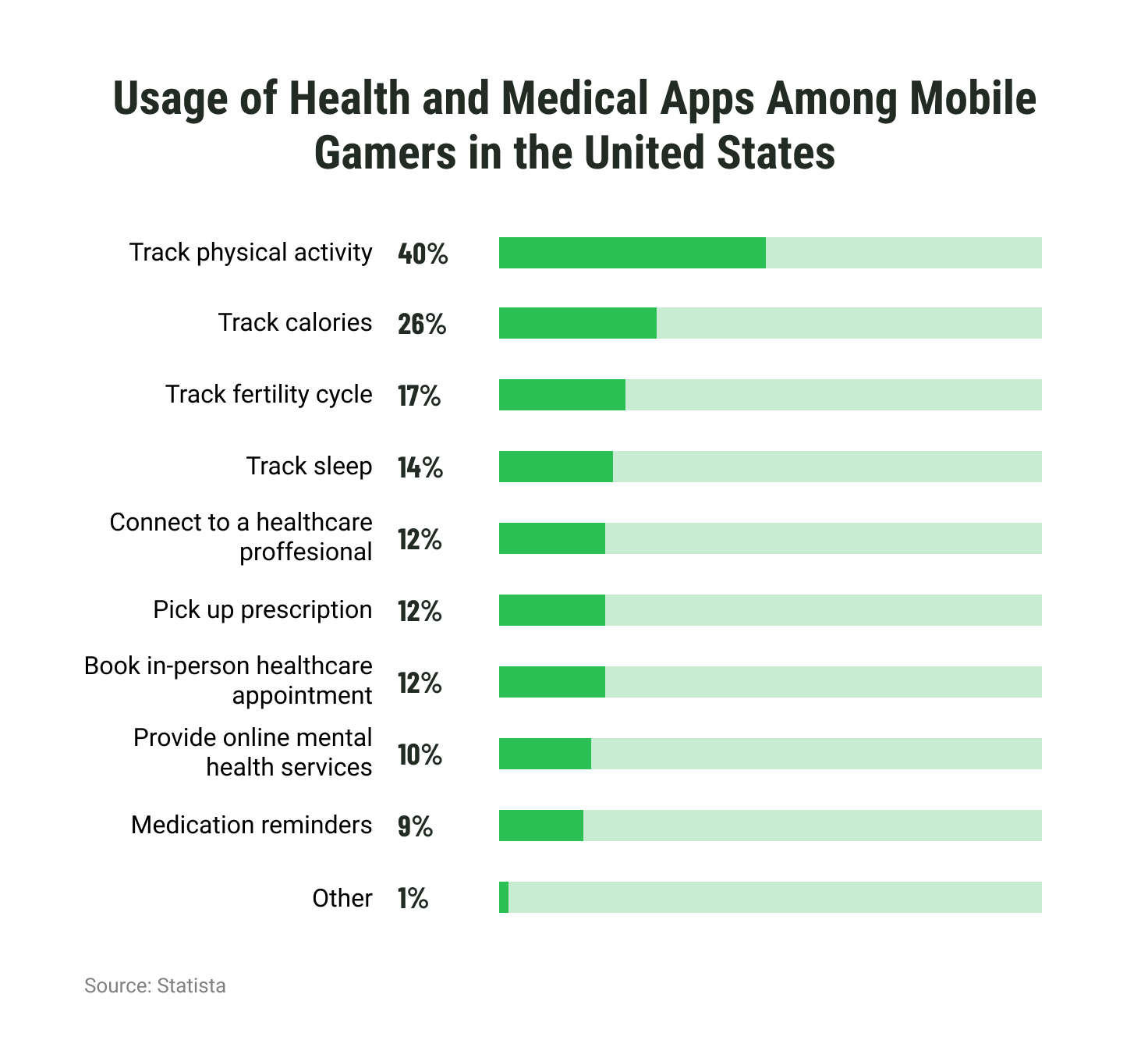
The most common features the users are interested in are the following:
- Tracking of physical activity
- Workout routines
- Step tracking
- Calorie counting
- Progress monitoring
If you want to stand out from the competitors, consider other valuable features: personalized recommendations and guidance based on the user's fitness goals, level of fitness, personal preferences, and access to communities of like-minded individuals working towards similar sports goals.
Nutrition app
45% of people globally are trying to lose weight. Nutrition apps focus on helping users track their food intake and monitor their nutrient intake. A healthy diet is an essential factor for weight loss. That’s why nutrition apps are the second most popular category of wellness applications.
Certain core features may be found in practically every diet and nutrition application:
- Personal accounts
- Food logging and tracking
- Calorie counting
- Meal planning
- Statistics
- Personalized recommendations
- Push notifications
Nice-to-have features include multi-device synchronization, the opportunity to join communities, and blogging to share the latest food and nutrition research, news, and health tips.
Mental health apps
Mental health applications are designed to help users manage and improve their mental health and well-being. Although mental health issues have always been a big part of human life, the COVID-19 pandemic and strict quarantine measures gave impetus to mental health app development to become more relevant than ever, making more people turn to these apps to find support and assistance.
According to the World Health Organization, mental disorders affect one in four people. Fortunately, society is becoming more and more conscious, therapy is more accessible, and prejudice around mental health problems has disappeared, resulting in the rise of digital mental health.
The features of mental health apps can vary depending on the app, but some common features include the following:
- Creating a profile
- Education and resources
- Goal setting
- Cognitive-behavioral therapy (CBT)
- Exercises and techniques to cope with psychological conditions
- Self-monitoring
- Community support
- Emergency support
- Notifications and reminders
To make your application more professional and appealing, consider implementing telehealth features and more opportunities for doctor-patient collaboration.
Meditation and mindfulness apps
The National Center for Complementary and Integrative Health discovered that 18 million U.S. adults (8%) use meditation to enhance their mental health. Those surveyed reported that meditation is a working tool to improve concentration and mental health and increase creativity. That’s why the meditation app market size is on the rise and expected to grow from $533.2 million in 2022 to $2,633.4 million by 2028, according to GlobalNewswire.
Meditation and mindfulness apps provide users with guided meditation and mindfulness exercises to help them improve their mental well-being. Every app is unique and is based on individual concepts, but there are several features that every app should have to provide the best user experience:
- User profiles
- Guided meditations
- Mindfulness exercises
- Breathing techniques
- Favorite sounds
- Sleep aids
- Progress tracking
- Daily reminders and push notifications
- Offline playback
Sleep tracking apps
The primary purpose of sleep apps is to help users monitor and analyze their sleep patterns. Some apps offer relaxing sounds to help users fall asleep, tutorials for relaxing evening activities like yoga or meditation and coaching with sleep experts.
Sleep tracking apps can provide a variety of features designed to help users improve their sleep quality, including:
- Relaxing music and sounds
- Smart alarm clocks
- Sleep stories
- Sleep stage tracking
- Meditation and guided breathing
- Sleep advice and tips
- Data analysis
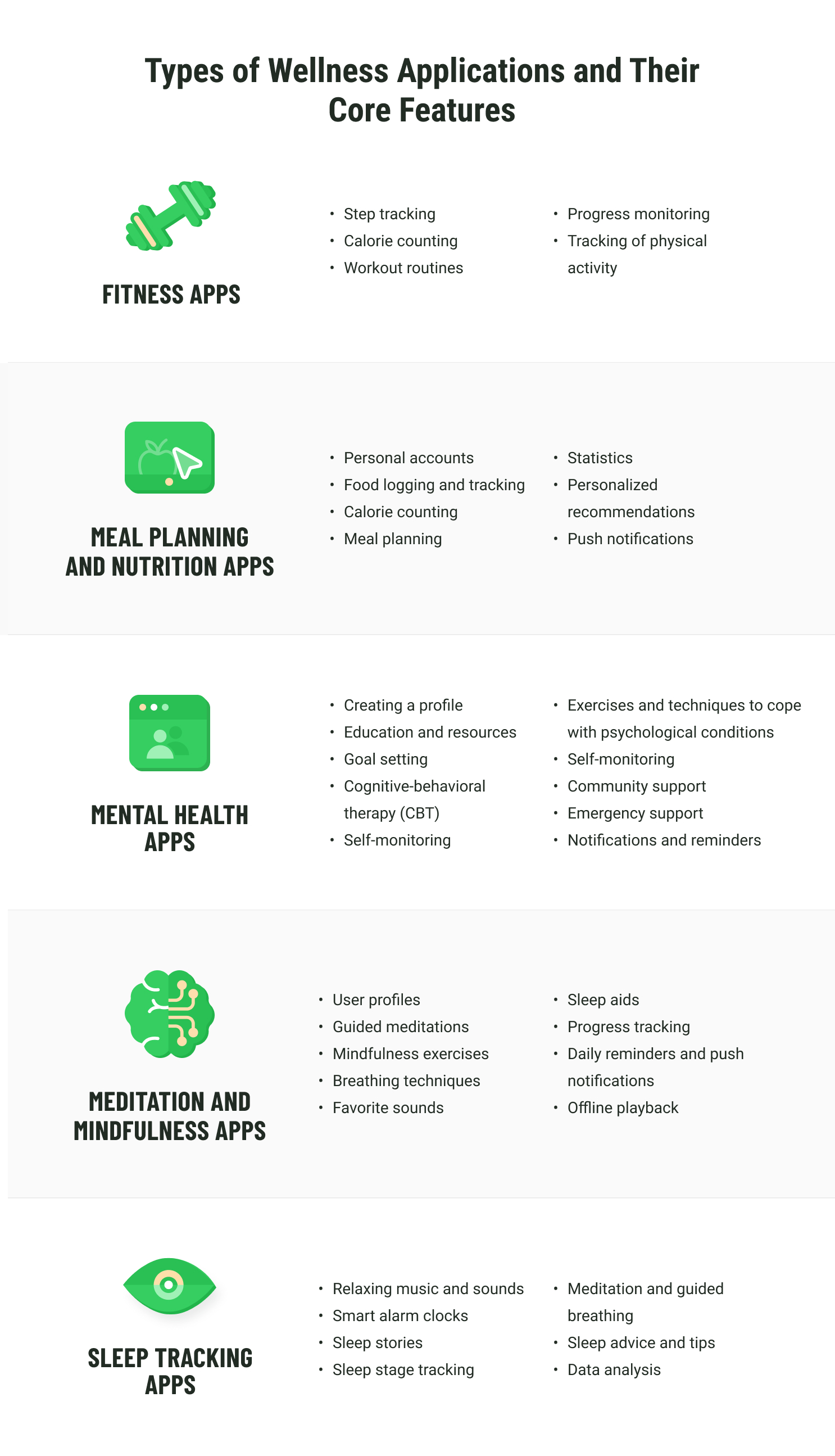
Core Wellness App Development Stages
In app stores, you can find a lot of wellness applications for any “color and taste,” but not all of them are of great interest among users. Lack of marketing, poor user experience, technical issues, and pricing are just a few reasons why applications fail. Let’s look at the steps to creating a successful wellness app.
Decide on the wellness app type and platform
The first step is conducting in-depth market research and identifying your target audience. Thanks to the analysis, you can determine the niche for your future application and understand what type of platforms and devices a particular user category prefers. For example, zoomers are the most active users of mobile apps, while 71% of boomers use laptops or PC daily and prefer to consume content using these devices.
Inception stage
Having decided on the direction of the development, you should pay close attention to the idea of the wellness application and identify its unique selling proposition (USP), core purpose, and features that will differentiate it from existing wellness apps in the market. Then, move to the project’s scope, create the development roadmap, prepare resources, and set the budget for MVP.
Design stage
Once you've determined the purpose and features of the app, you should start designing the user interface (UI) and user experience (UX). This stage involves creating wireframes, mockups, and prototypes to have an exact picture of the end product and test its usability and functionality.
Development
The development stage involves writing code for the front-end and back-end of the app, integrating third-party APIs (if necessary), and testing the app for bugs and errors. Plan your resources and budget, choose the right development methodology, and prioritize user experience to make the development stage successful.
Testing
Then, conduct extensive testing to ensure the app functions correctly and meets user requirements. This stage involves alpha testing, beta testing, and user acceptance testing (UAT).
Preparing technical documentation
This stage involves documenting the technical specifications and requirements of the wellness app. The technical documentation serves as a guide for developers and other stakeholders involved in the project.
Release
Once the wellness app is ready, it must be released to the public. This stage can involve a range of activities: app store submission, marketing, promotion, and finally, launch.
User behavior monitoring and hypothesis testing
During this phase, you constantly improve the critical metrics of your product and validate the different hypotheses by implementing A/B testing and monitoring analytics.
Maintenance and support
This stage outlines the procedures and tools used for maintaining and supporting the app after its launch, including bug fixes, updates, and customer support, as well as checking app usage with the help of analytics tools.
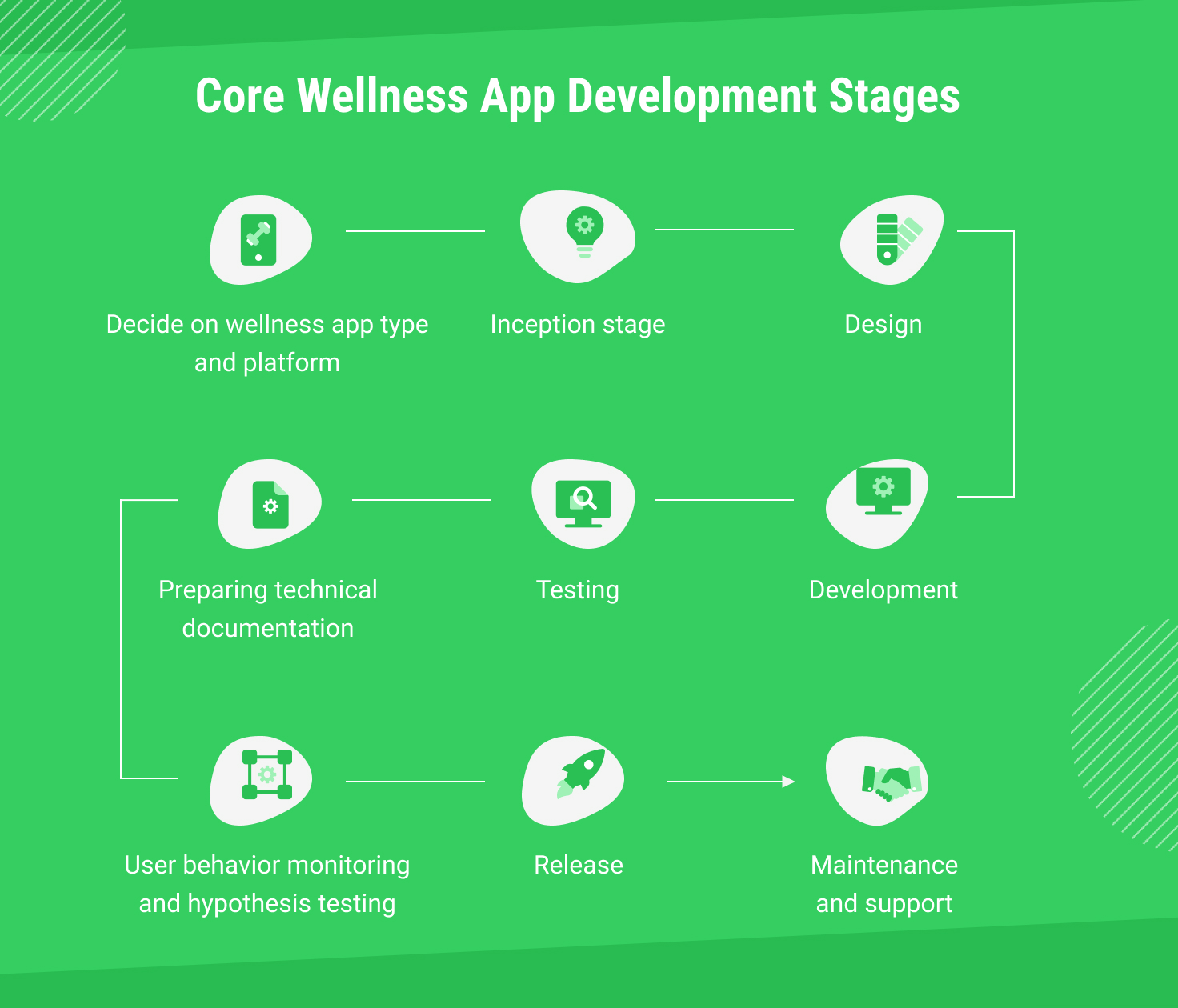
Bottom Line
Overall, investing in a wellness app can be a wise decision due to the increasing demand, market potential, diverse offerings, and technology advancements in this space.
However, creating a wellness app with a tech-savvy partner will be easier. Emerline is a software development company with robust experience in creating solutions for the medical and fitness industries. Book a free consultation with our experts and discover the opportunity to develop a cutting-edge solution tailored to your business needs.
